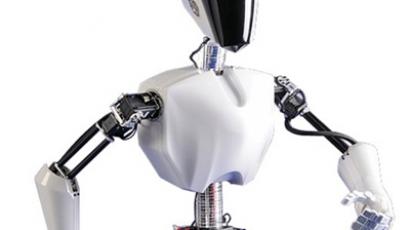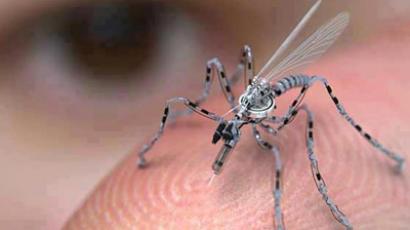Pentagon unveils DARPA-made mule-drone (VIDEO)
Military researchers working for the Pentagon have released video footage of one of its newest projects, the Legged Squad Support System, and are touting the creation as a cyborg-style animal-drone that will aid troops across a variety of terrains.
Scientists at the Defense Advanced Research Projects Agency, or DARPA, are touting a video of one of its latest endeavors in action. The lab has released footage of an unmanned, four-legged robot nicknamed the LS3 that they expect to send into battle to assist soldiers and Marines in an array of conditions.“Today’s dismounted warfighter can be saddled with more than 100 pounds of gear, resulting in physical strain, fatigue and degraded performance,” DARPA claims on their website. “Reducing the load on dismounted warfighters has become a major point of emphasis for defense research and development, because the increasing weight of individual equipment has a negative impact on warfighter readiness. The Army has identified physical overburden as one of its top five science and technology challenges. To help alleviate physical weight on troops, DARPA is developing a four-legged robot, the Legged Squad Support System (LS3), to integrate with a squad of Marines or Soldiers.”DARPA says that, when fully-functioning, the mule-like machine will be able to carry upwards of 400lbs of weapons, supplies and other cargo as troops transverse all sorts of terrain, “similar to a trained animal and its handler.” Additionally, the LS3 is expected to act as an auxiliary power source to recharge handheld devices used in the field.Scientists completed their first test run of the LS3 back in January and have recently launched a two-year, platform-refinement test cycle in July that is being assisted with aid from the Marine and Army. At the end of this program, says DARPA, the LS3 will ideally be able to accompany troops using its own local perception abilities. The “LS3 attempts to follow as close as possible to the path its leader takes,” DARPA explains in one example, adding that the craft with also have “freedom to make local path decisions, so the leader doesn’t need to think about LS3’s mobility capabilities.”Although DARPA says that the LS3 will be able to move across fronts on its own without necessarily relying on direct commands for mobility instructions, the agency has not announced if the finished product will be able to be as intuitive in regards to mounted firearms that may be affixed to its shell.“The vision for LS3 is to combine the capabilities of a pack mule with the intelligence of a trained animal,” DARPA Program Manager Army Lt. Col. Joe Hitt tells reporters.














